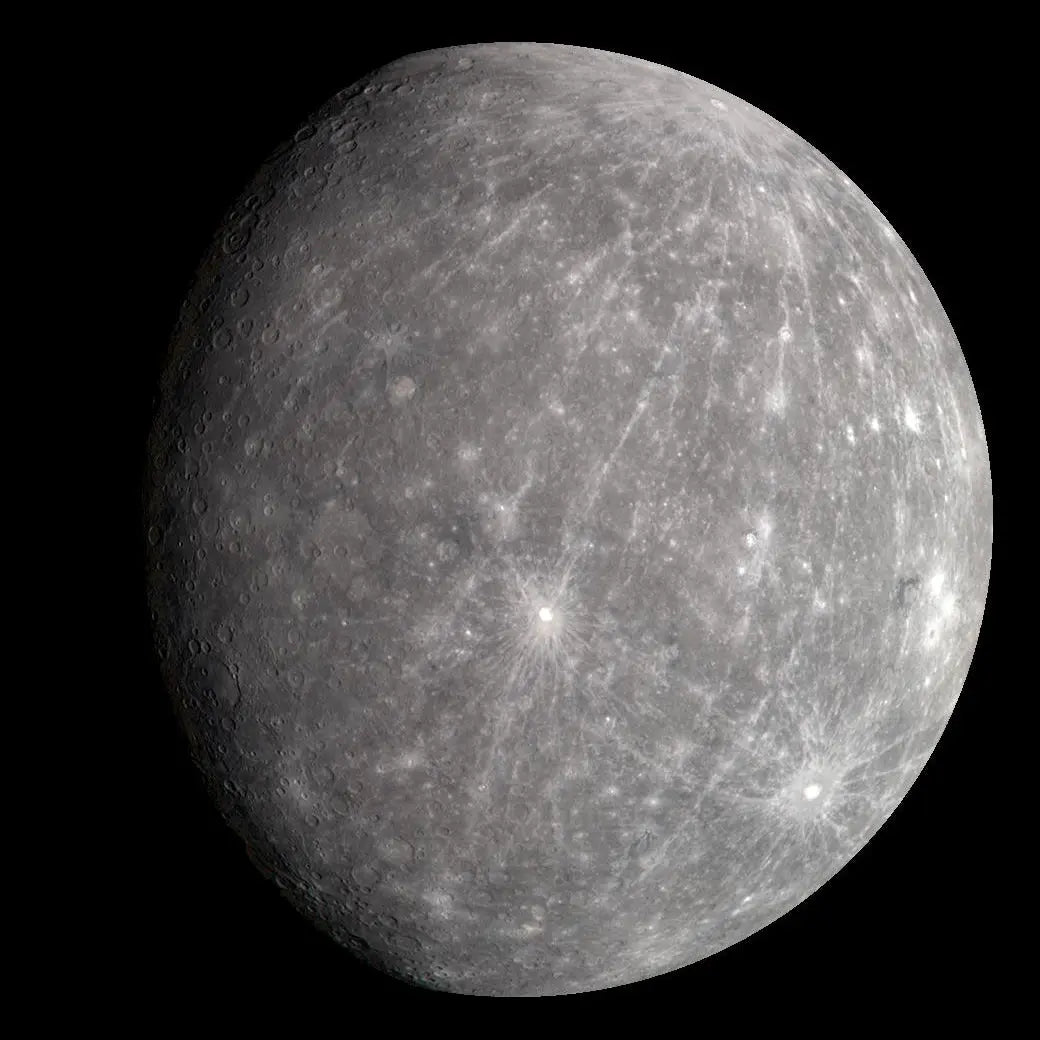Mercury, the smallest and innermost planet in our solar system, has long been a subject of fascination and study for astronomers and space enthusiasts alike. Its close proximity to the Sun, its rapid orbit, and its mysterious surface features make it a unique and intriguing celestial body. This essay delves into what is currently known about the planet Mercury, exploring its physical characteristics, its history of observation, and the scientific missions that have expanded our understanding of this enigmatic world.
Physical Characteristics
Mercury is a rocky planet, often classified as a terrestrial planet like Earth, Venus, and Mars. It has a diameter of about 4,880 kilometers, making it the smallest planet in our solar system. Despite its small size, Mercury is incredibly dense due to its large iron core, which constitutes about 85% of the planet's radius. This core is surrounded by a thin mantle and a crust.
The planet's surface is heavily cratered, reminiscent of our Moon's terrain. These craters range from small, bowl-shaped indentations to vast basins. One of the most prominent craters is the Caloris Basin, which spans approximately 1,550 kilometers in diameter.
Proximity to the Sun
Mercury orbits the Sun at an average distance of about 57.9 million kilometers, completing one orbit in just 88 Earth days. This rapid orbit, combined with its close proximity to the Sun, results in extreme temperature variations. Daytime temperatures can soar up to 800 degrees Fahrenheit (427 degrees Celsius), while nighttime temperatures can plummet to -290 degrees Fahrenheit (-179 degrees Celsius). This stark contrast is due to the planet's thin atmosphere, which is incapable of retaining heat.
History of Observation
Mercury has been known since ancient times, with civilizations like the Babylonians and the Maya recording its movements. Due to its proximity to the Sun, Mercury is often visible just before sunrise or just after sunset, earning it the nicknames "morning star" and "evening star." However, its position also makes it challenging to observe, as it is often lost in the Sun's glare.
Scientific Missions
Our understanding of Mercury has been significantly enhanced by space missions. NASA's Mariner 10, launched in 1973, was the first spacecraft to fly by Mercury. It provided the first close-up images of the planet, revealing its cratered surface and gathering data on its magnetic field.
More recently, NASA's MESSENGER mission, launched in 2004, became the first spacecraft to orbit Mercury in 2011. Over its four-year mission, MESSENGER mapped the entire surface of Mercury, discovered evidence of water ice at its poles, and provided insights into the planet's geological history.
The European Space Agency (ESA) and the Japan Aerospace Exploration Agency (JAXA) have also collaborated on the BepiColombo mission, which was launched in 2018 and is expected to arrive at Mercury in 2025. This mission aims to further our understanding of the planet's composition, geology, and magnetic field.
Conclusion
Mercury, with its unique position in our solar system and its intriguing characteristics, continues to captivate the curiosity of scientists and space enthusiasts. As technology advances and more missions are sent to explore this enigmatic planet, our knowledge of Mercury is bound to expand, shedding light on its mysteries and its place in the cosmic tapestry of our solar system.

